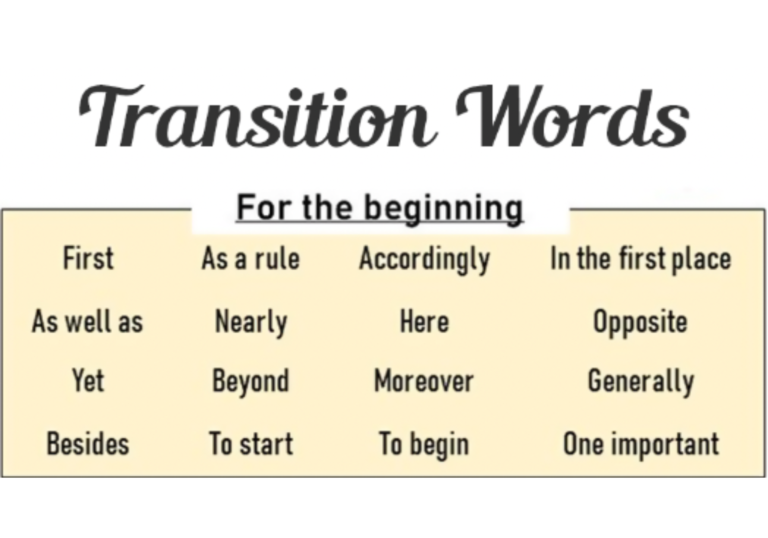Reflective Essay Outline: Tips for Creating
Writing a reflective essay can be difficult as it involves analyzing previous experiences from your current point of view, delving into your thoughts and emotions extensively.
Do not be afraid because in this article by Essay Writing Service online, we will give you a helpful instruction on how to make a flawless outline for a reflective essay. By arranging and structuring your thoughts thoughtfully, you will learn how to communicate your personal experiences effectively, making the writing process simple and effective.
What is a Reflective Essay Outline
A reflective essay outline thoughts and ideas regarding a specific item. This type of academic writing revolves around a specific response to a topic in the form of a personal reflection. Creating an outline is the first step to a well-written reflective paper.
A reflective essay is similar to a diary entry except that others will read it, so it needs a coherent structure.
What makes reflective essays different from other essay types is the reflective aspect that comes with them. Some topics include a life experience, a special place, or something you have watched.
Creating an outline before the reflective paper is important to organize your thoughts and ideas. Without a well-structured essay outline, writing a perfect and well-organized reflective essay would be very difficult.
Purpose of Reflective Writing
Reflective writing offers a unique opportunity to express your thoughts and actions and showcase your personal growth and emotional development. When you engage in this form of self-expression, you delve deep into your personality and character traits, allowing you to observe how they evolve and transform over time. This introspective journey can be quite enlightening and rewarding.If you ever feel stuck or overwhelmed, consider exploring reflective essay writing services to gain expert guidance in articulating your personal insights effectively.
Starting a reflective writing process can be challenging for many, especially if you’re new to it. However, a helpful way to kickstart your reflective essay is by creating a structured outline. An outline provides a clear roadmap for your thoughts and ideas, making organizing your reflections easier and ensuring you cover all the relevant aspects of your experiences. It can be a valuable tool for self-discovery and personal growth. So, don’t hesitate to begin your reflective writing journey with a well-crafted outline; it can make the process more enjoyable and productive.
How to Write a Reflective Essay Outline
Writing a reflective essay demands a unique approach compared to other essay types, which calls for a distinct organization of ideas. Certain fundamental principles always hold true regardless of the specific topic you’ve chosen for your reflection.
A structured outline is key to effectively organizing your thoughts and experiences in a reflective essay. This outline typically consists of three essential sections: the introduction, body, and conclusion. These segments serve as the framework for your essay, allowing you to present your ideas coherently and engage your readers effectively.
Here’s a step-by-step guide to help you craft a well-structured reflective essay outline:
1. Reflective Essay Introduction
Like any other form of writing, a reflective essay starts with an introduction. This crucial opening segment serves as the gateway for your readers into the world of your reflection. To make it effective, consider including the following two key elements:
a. Hook the Reader’s Interest: Begin your introduction with a compelling hook or anecdote that piques the reader’s curiosity. It could be a personal experience, a thought-provoking quote, or a captivating story related to your reflection. This initial engagement encourages your audience to delve deeper into your essay.
b. The Thesis Statement: After capturing the reader’s attention, clearly articulate the purpose of your reflection. Explain the specific event, experience, or topic you will explore in your essay. Additionally, provide a concise thesis statement that outlines the central theme or lesson you’ve derived from your reflection.
This sets the stage for the reader, giving them a sense of what to expect as they journey through your reflective essay.
By incorporating these elements into your introduction, you make your reflective essay more engaging and provide readers with a clear roadmap of your reflection’s focus and purpose. This ensures that your essay effectively conveys your thoughts, emotions, and insights to your audience, making it a compelling and meaningful piece of writing.
2. Reflective Essay Body Paragraphs
Moving on to the next section of your reflective essay outline, we encounter the body, often considered the most challenging part of the reflection paper. Indeed, constructing a well-structured body section can be a formidable task if you haven’t already prepared a thoughtful outline. Here’s how to navigate this critical segment effectively.
Begin your body paragraphs with a topic sentence that succinctly encapsulates the main idea you intend to explore. When describing an event in your reflective essay, it’s essential to ensure that each paragraph contains the following elements:
a. First Body Paragraph: In this initial body paragraph, your primary focus should be providing a detailed event description. To create a comprehensive portrayal, address the fundamental journalistic questions: who, what, why, where, and when. Ensure you incorporate all the necessary information to vividly describe your experience.
When describing an event, following a chronological order is often helpful. Avoid abrupt transitions between different moments in time, as this can make your narrative less coherent.
b. Second Body Paragraph: Moving on to the second part of your body section, your task highlights the key issues or aspects of the described event. This is an opportunity to delve deeper into the significance of the experience. If relevant, you can also incorporate quotations or cite sources supporting or relating to your points. This can lend credibility and depth to your reflections, particularly if your experience connects with existing literature or external sources..
c. Third Body Paragraph: The third part of your reflective essay reflects your thoughts about the event. Here, you should delve into the personal impact and significance of the experience. Share the lessons you’ve learned, insights gained, and ideas that have evolved due to this event. This is where your essay truly becomes reflective, as it reveals the growth and development in your thinking, emotions, or understanding brought about by the experience..
Incorporating these elements into your body paragraphs will enable you to create a comprehensive and engaging narrative in your reflective essay. It will also ensure that your readers gain a profound insight into your experience, its relevance, and the personal growth it has facilitated.
3. Reflective Essay Conclusion
The concluding paragraph of your reflective essay outline serves as the final brushstroke that ties your entire composition together. In this section, you have the opportunity to reinforce the central message, recap the key points, and leave your reader with a lasting impression of your reflection.
To craft a compelling essay conclusion, consider incorporating the following key elements:
a. Restate Your Thesis Statement: Begin by revisiting and restating your thesis statement. This is the overarching theme or lesson that your reflection has revolved around. Restating it reminds your audience of the core focus of your essay.
Review the Main Ideas: Next, provide a concise summary of the main ideas and insights you’ve explored in the body of your essay. This is your chance to remind readers of the essential aspects of your reflection and how they contribute to your overall message.
b. Closing Sentence: End your conclusion with a thought-provoking closing sentence. This can be a statement that reinforces the significance of your reflection, offers a call to action, or leaves the reader with a powerful thought or question to ponder. A well-crafted closing sentence ensures that your essay concludes on a strong note and resonates with your audience.
By incorporating these elements into your reflective essay conclusion, you create a sense of closure and cohesion in your writing. This not only reinforces the central theme and key takeaways but also leaves a lasting impression on your readers, prompting them to reflect on the insights you’ve shared and the lessons they can draw from your personal journey.
Reflective Essay Format and Style
When brainstorming and analyzing essay ideas and choosing which referencing style to employ, it can be a bit daunting. However, there are some important considerations to help you make an informed decision.
– First and foremost, it’s crucial to familiarize yourself with your professor’s or institution’s specific requirements. Different academic settings may have varying preferences for citation styles, so it’s vital to align with their guidelines. If your professor hasn’t specified a particular style, don’t hesitate to seek clarification or guidance.
– The second factor to consider is the prevailing referencing format within your field of study. Disciplines often have established conventions for citing sources. For instance, if you’re pursuing studies in the sciences, the American Psychological Association (APA) style is frequently the go-to choice. Conversely, the Modern Language Association (MLA) style is commonly used if you’re immersed in humanities. Researching and adhering to the conventions of your academic discipline can lend credibility and professionalism to your work.
Additionally, don’t underestimate the importance of personal comfort when selecting a referencing style. Each style has its own rules and formatting guidelines, and your familiarity with and ease of using a particular style can greatly affect the efficiency and quality of your writing. Choosing a style you feel most comfortable with can streamline the citation process and enhance your overall writing experience.
Consistency is one key rule to remember, regardless of the style you select. Consistency in citation and formatting throughout your essay is essential. It ensures that your work appears polished and professional while preventing any potential confusion or errors in your references. So, while making your choice, consider these factors and select the referencing style that best aligns with your academic environment, field of study, and personal comfort, and then maintain that consistency rigorously.
Tips For Writing a Reflective Essay
The outline serves as the structure of the essay, but it is important to be flexible as you write because things may change or your thoughts may evolve. Writing is dynamic, so allow yourself to go with the flow. Other writing tips include:
– Ensuring that the tone reflects your voice.
– Using transition words to smoothly connect ideas and paragraphs.
– Taking breaks from your writing and revisiting it with fresh eyes to identify any errors or areas of confusion.
– Running a spell and grammar check.
– Having someone else read your work for feedback.
– Reading your essay aloud or using a voice reader to catch any unusual mistakes or missing transitions.
Conclusion
In conclusion, crafting a reflective essay that resonates with readers requires careful planning and a structured approach. The reflective essay outline serves as a roadmap for success, beginning with a captivating introduction that sets the stage and outlines your purpose, followed by a well-organized body section that delves into the event or experience, and concludes with a thought-provoking closure.
Emphasizing the importance of consistency in referencing styles and recognizing the influence of your academic field’s conventions and your personal comfort are vital considerations. By following these tips, you can create a reflective essay that engages your audience and offers profound insights into your personal growth and experiences.

Nicole Hardy
Article Author
Nicole Hardy is renowned in the fields of education and the arts journalism, particularly known for her detailed and insightful reporting on performing arts education. With a career spanning over a decade, she has established herself as a respected authority in this area. Hardy’s work is recognized for its in-depth analysis and engaging writing style. She holds a Master’s degree in Journalism from the University of Arts, specializing in arts and culture journalism.



